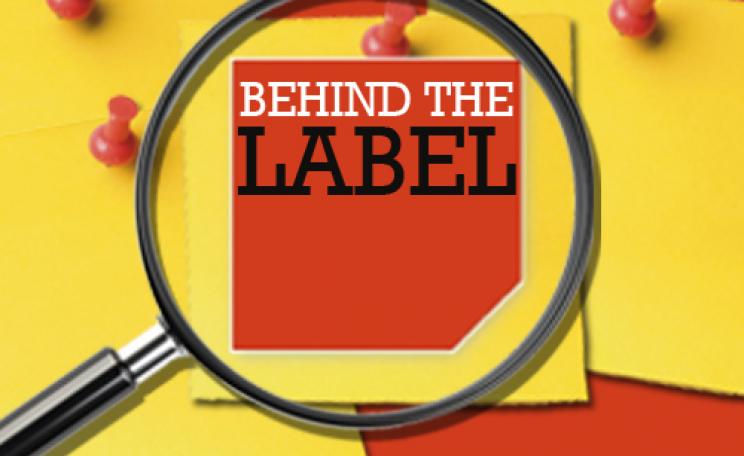Globally we spend around $1.32 billion a year on personal lubricants, and the market is growing.There are literally hundreds of lubricants on the shelves. K-Y Jelly – first patented in 1904 as a surgical lubricant – is the oldest and most trusted brand, as well as the market leader, commanding around 52 per cent of the market.
The marketing mythology is that are largely bought by female baby boomers who are reaching menopause, younger women taking oral contraceptives, and breastfeeding mothers. Certainly at each of these stages in a woman’s life, vaginal dryness can occur.
However, lubricants are also used by gay couples – of both sexes – and by heterosexual lovers looking to spice up their love lives with new-age lubes that give a warming sensation (K-Y recently expanded its range to include a liquid lubricant, K-Y Liquid, and a warming lubricant, K-Y Warming) or which are, for example, chocolate flavoured.
There may be something luxurious about slathering on sexual lubricant, but the cultural quandaries posed by the increasing use of these products are complex. Why, for instance, would you need your lover to taste of chocolate? And if you do, why not use actual chocolate? Why would a woman who is neither on the Pill, breastfeeding or going through menopause have trouble producing her own lubrication? Most observers link this to a lack of decent foreplay in the rush to get to the ‘goal’ of penetrative sex. If this is the case, it would seem to link into reports of women’s increasing lack of satisfaction with sex in general. Likewise, more and more women are also taking anti-depressants and this can interfere with natural lubrication.
Those thorny questions aside, there are genuine reasons to rethink the use of personal lubricants. Sex should be a healthy act, but lubricants can contain a range of unhealthy ingredients. Yet in our research we found that some manufacturers of lubricant products (Durex Play, for example) do not even declare the product ingredients on the package, making safe comparative choices impossible.
Because of the way in which personal lubricants are used – in intimate places and in the heat of the moment – most of these ingredients are preservatives such as sodium hydroxide (also known as lye or caustic soda) that can be irritating to the mucous membranes. Some, like parabens, are not only irritating, they are oestrogenic.
Most of the data on skin absorption of these chemicals is based on skin outside the body or on oral ingestion. As always when raising the issue of potentially toxic effects, there will be someone who argues that very large doses of these chemicals need to be ingested or absorbed before they cause harm; but what are the effects low but chronic, exposure over time? In addition, where is the safety data on the exposure via the mucous membranes to such chemicals?
Mucous membranes are the moist layer of semi-permeable tissue lining the mouth, nose, eyes, vagina and anus. Because they do not have the protective layer (stratum corneum) found on the surface of the outer skin, mucous membranes can be damaged, irritated and penetrated by synthetic chemicals much more easily. Rectal and vaginal absorption is, generally speaking, many times greater than oral absorption.
There are other issues with lubricants that are rarely publicised. Most important of these is their effect on fertility. Many studies have found that personal lubricants have a deleterious effect on sperm function, reducing motility and the ability of sperm to penetrate cervical mucus, even in the small concentrations of less than 10 per cent found in these products.
In fact, several studies that have looked at the effects of lubricants like K-Y Jelly and its brand rivals, such as Astroglide and Replens, have found that they can be as lethal to sperm as a contraceptive jelly. For instance, in laboratory data presented to the 28th Annual Meeting of the American Society of Andrology and Andrology Lab Workshops in March 2003, exposure to K-Y Jelly after fertilisation was found to cause a severe decline in the ability of embryos to form in vitro.
Personal lubricants can be disastrous for fertility in other ways: for instance, by altering the normal pH of the vagina and cervical mucus. Under normal circumstances, the vagina’s natural acidic secretions are lethal to sperm; but, just before ovulation, vaginal pH becomes more alkaline, providing a more sperm-friendly environment. Data from the World Health Organization says that the optimum pH value for sperm migration and survival in cervical mucus is between 7.0 and 8.5. In contrast, vaginal lubricants tend to have pH values below 7, and often as low as 3.5.
Another fertility-diminishing factor is the syrupy texture of K-Y products and their ilk. Because of their viscosity, personal lubricants can prevent sperm from reaching the cervical mucus quickly. The result is that sperm end up dying in the acidic environment of the vagina before they reach the uterus.
Slowing to a stop
Sperm is also sensitive to chemicals that alter its osmolality (a measure of the total number of particles in a solution such as blood or semen). Osmolality increases with dehydration and decreases with overhydration – the effect on sperm being to cause cells to either shrink or swell too much. Semen has an osmolality around 320 mOsm/kg, which works to keep sperm healthy and active. As osmolality increases, sperm motility decreases, with all motion stopping at 600 mOsm or greater. Lubricants can have osmolality levels three to 10 times that of semen and so cause irreversible damage to sperm motility on contact.
A common misconception is that if a lubricant does not contain a spermicide or if it is water soluble, it will not impair sperm function. However, water-based lubricants often contain glycerine (as in K-Y Jelly) and propylene glycol, both of which are highly hyperosmotic. This results in irreversible damage to sperm and a loss in motility.
This is important information for couples who are trying to conceive; around 75 per cent of these couples report an increased incidence of vaginal dryness due to stress and fertility medications. Data show that around 43 per cent of such couples trying to conceive use personal lubricants to deal with this problem.
Given that infertility rates are at an all-time high, it would make sense if testing were required by the appropriate health authorities to determine lubricant’s effects on fertility and, if there is any evidence that a personal lubricant could interfere with fertility, the product should carry a warning to avoid its use while trying to conceive.
What’s in the tube:
INGREDIENTS:
Aqua, glycerine, hydroxyethylcellulose, gloconolactone, chlorhexidine digluconate, methylparaben, sodium hydroxide
Glycerine
Emollient
Can cause skin dryness over time and this in turn can make it more prone to absorbing harmful chemcials. Glycerine has been shown to be toxic to sperm and it is also a sugar, so can feed Candida albicans.Should be avoided by women prone to thrush.
Hydroxyethylcellulose
Emollient
A cellulose derivative also often found in dry-eye medications. No known toxic effect; however, this ingredient is poorly studied.
Gluconolactone
Antimicrobial, controls pH
Harsh alpha hydroxyl acid often used in the treatment of acne. Can irritate skin and eyes.
Chlorhexidine digluconate
Antiseptic
Often found as the active ingredient in mouthwashes designed to kill dental plaque. Mildly toxic by ingestion; also a skin and eye irritant. Laboratory evidence suggests that it may cause cellular mutations.
Methylparaben
Preservative
Parabens are known to be oestrogenic and exposure has been associated with the proliferation of breast cancer cells in the lab. Irritating to skin and may cause contact allergies.
Sodium hydroxide
Preservative, controls pH
Can cause irritation to the skin and (if it comes into contact with them) eyes.
This article first appeared in the Ecologist October 2007







